
All categories
Featured selections
Trade Assurance
Buyer Central
Help Center
Get the app
Become a supplier

(1688 products available)
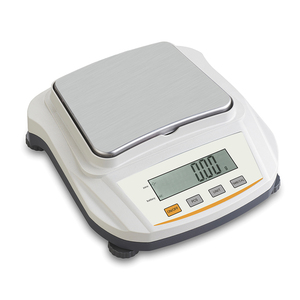
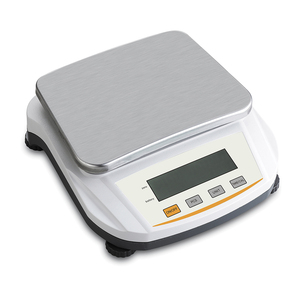

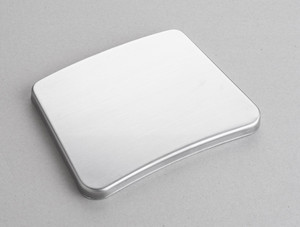
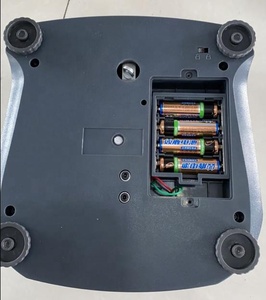
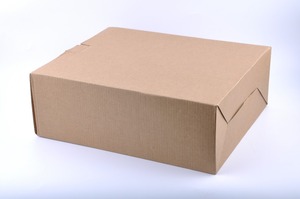


























Parts counting scales may be classified in multiple ways, such as the following common ones based on operational principles, structure, and intended use.
This is the oldest form of parts-counting scales. A load-bearing jaw arrangement under tension in this scale mechanically operates a dial, which is the pointer position that indicates weight. As weight increases, the dial pointer moves to indicate scales, thus showing an indication of the scale. Location of the dial also helps in determining the number of parts in inventory.
More advanced parts-counting scales utilize electronics. They have load cells that convert pressure into electrical signals. This process is more accurate and can also be programmed with average weights of known items to increase efficiency in counting. These systems will usually enable users to input weights of a sample to count part of the system, and the scale will quickly calculate the weight ratio of the sample and provide a counted part result on the display.
This type of scale makes use of electronic technology to weight and count parts at a faster and more precise rate than the mechanical scale. A digital scale has a load cell as a weight sensor that converts the weight to an electrical signal. This signal is then processed and digitally displayed. These digital scales often have added functions where the average weight can be set, hence leading to more precise counting based on the sample provided.
Designed for heavy-duty use in factories or warehouses, these scales handle large volumes of small parts efficiently. Their robust build and high-capacity weight sensors make them suitable for high-demand environments, such as manufacturing or logistics centers.
Checkweighers are used in packaging and food industries. They weigh items to confirm they meet predetermined specifications. Checkweigher scales can be integrated with parts counting functionality to ensure accurate counts during packaging.
This diversity allows businesses to select scales that best fit their operational needs, whether for simple inventory counting or complex industrial applications.
Several key specifications must be considered when selecting a parts counting scale to ensure it meets operational requirements.
The load capacity is one of the most crucial factors determining the scale's maximum weight it can bear. This means that any scale chosen should have a load capacity that can support the weight of the items being counted and scaled. In industrial areas, where big amounts of parts may be measured at any given time, large scales should be used.
Accuracy is the most important benchmark in any counting activity. It should simply be the possibility to pass the correct number, while resolution specifies the smallest weight step the scale can capture. High resolution is needed when measuring very small components in parts counting. For example, in electronics manufacturing, small quantities of small, intricate components count need ultra-accurate scales.
Platform size is the surface area of the balance on which the load is placed. This means the platform size is important depending on the item to be counted. Larger items require scales with bigger platforms, while smaller items can be placed on small platforms. For parts counting incorporated into a production system, the platform should be big enough to hold the countable items without toppling over.
In the situation where parts are required to be counted quickly, the speed of count becomes increasingly important. This applies to environments where the rates of throughput are critical. Choose a scale with a high-speed count to meet your operational demand. Generally, scales utilized in production lines or inventory management will have high counting speed requirements.
This is important, especially for users of the scale, since the control options available and the type of display will contribute to easy use. LCD provides better readability; for example, backlight displays are readable even under low light conditions. Similarly, it is crucial to understand how to operate the scale, as touch screens and practical buttons help increase productivity. Ensure the scale has provisions for memory or output options for situations where the counted number is required to be stored or transmitted to further processing.
Parts counting scale has wide applications across industries since accurate and efficient counting and weighting are required.
These scales are primarily used in the manufacturing industry to count raw materials, components, and parts. These are used in production lines to measure frequently used supplies, which increases efficiency by cutting the time count and errors. This is mostly seen in companies dealing with a lot of small items, like hardware or automobile parts. Parts counting scales help in maintaining consistent production and preventing shortages or overstocking in inventories.
Parts-counting scales are also used in warehouses for counting inventories. It becomes easier to count items like screws and bolts sorted in bulk by weight. It helps the workers to give general inventory counts more quickly and efficiently. Companies that sell or stock catalog items in large quantities usually have scales to ensure the accuracy of the displayed item counts. This aids in improving efficiency and accuracy in restocking and order fulfillment.
In the pharmaceutical industry, accuracy is very important, especially when counting pills, tablets, and capsules. Parts counting scales are used for counting and weighing medications to guarantee the right dosage is measured during the drug packaging process. This avoids over-dispensing or under-dispensing, which can cause adverse effects. The scales are also used for counting small medical equipment or parts during the stock check. Consistency and precision in these operations ensure compliance with regulations and good health safety.
Counting scales are used in the food industry to count ingredients like spices, nuts, or small produce sections. It allows a precise amount to be weighed and counted when packaging food products, ensuring consistency in a product's weight and quality. They are also used for counting and weighing items like prepackaged food to be put on inventory. It helps save time and reduces the number of manual labor resources while increasing accuracy in food processing, packaging, and distribution.
In electronics, these scales count small components like resistors, capacitors, and bolts. They are especially useful during the inventory of parts and components where precision is important to avoid shortages or surpluses. These scales help count sorted electronic parts quickly and efficiently, reducing the time spent on manual counting and allowing for better inventory management.
It is important to choose the right parts counting scales because it affects work efficiency and depends on several factors like scale accuracy, maximum capacity, and work type.
Precision and resolution are the first factors to be focused on when trying to ensure accurate parts counting. It simply means that the scales should have high internal resolution to measure the smallest weight increments and high accuracy because it must give exact weight measurements. This is particularly important in industries with small parts or materials where even a small error counts. The scale should also have a good average weight to enhance its accuracy in food processing.
Consider how much weight the scale must handle at peak times. The materials that may commonly be found in this industry vary in size, from small fasteners or electronic components to bulky hardware components in industrial applications. There is a corresponding difference between the parts counting scale parameters of maximum load capacity and the items to scale; thus, it matters that the scale chosen has appropriate load capacity.
Some additional functions can help in better use, such as piece counting, average weight, and tare weight features. Select a scale with a programmable keyboard for average weight and count display. Such functionality is especially important when handling repetitive tasks such as counting the same item multiple times. The tare function will help eliminate the container's weight so that only the measured item's weight will be measured, increasing efficiency.
Choose the appropriate platform size depending on the item that needs to be counted. Large items require larger platforms, whereas small items are okay on small ones. The scale should be large enough so that the load being scaled does not topple over or touch the edges, so the item remains stable while being weighed and counted. In industrial settings, large items like large mechanical parts or assemblies are common, and those require large platforms.
The scalability aspect is crucial because it will dictate how smooth and easy the task will be. Look at the scale's readability; for instance, an LCD backlight display would be convenient. Simple controls can help boost productivity since they mean less time is needed for the training of the staff. Consider the communication interfaces available, such as the RS232 or USB, to connect other devices such as computers for better data transfer and storage.
A.1 Parts counting scales are used in manufacturing, inventory management, pharmaceuticals, food, and electronics. Across these industries, accurate counting and weight measurement are vital for efficiency, quality control, and inventory management. Parts counting scales are employed to streamline operations in counting small items, weighing components, and maintaining accurate inventories.
A.2 Yes, the industrial parts counting scales are constructed to be strong and withstand daily work demands. They are made to last over time and under tough situations. The large weight capacities and speedy count rates help reduce wear and tear, making them ideal for busy workplaces. They are designed for easy cleaning and maintenance, protecting their longevity.
A.3 Yes, these scales count parts correctly regardless of size, as long as the weight range is appropriate. High precision load cells ensure accurate measurements for both small and large items. These scales can categorize items effectively by providing average weights for parts sorting or counting.
A.4 The majority of modern parts counting scales contain communication interfaces such as RS232 or USB. This enables data transmission to inventories or enterprise resource planning (ERP) systems. Scales can be integrated into existing workflows to promote real-time data management and increase operational efficiency.
A.5 Avoid overloading the scale and using the correct weight range for the items being measured to improve scale longevity. Regularly clean the platform to maintain sensors and protect parts from debris. Follow protective measures during usage to limit exposure to harsh elements, and conduct periodic calibrations to maintain accuracy.